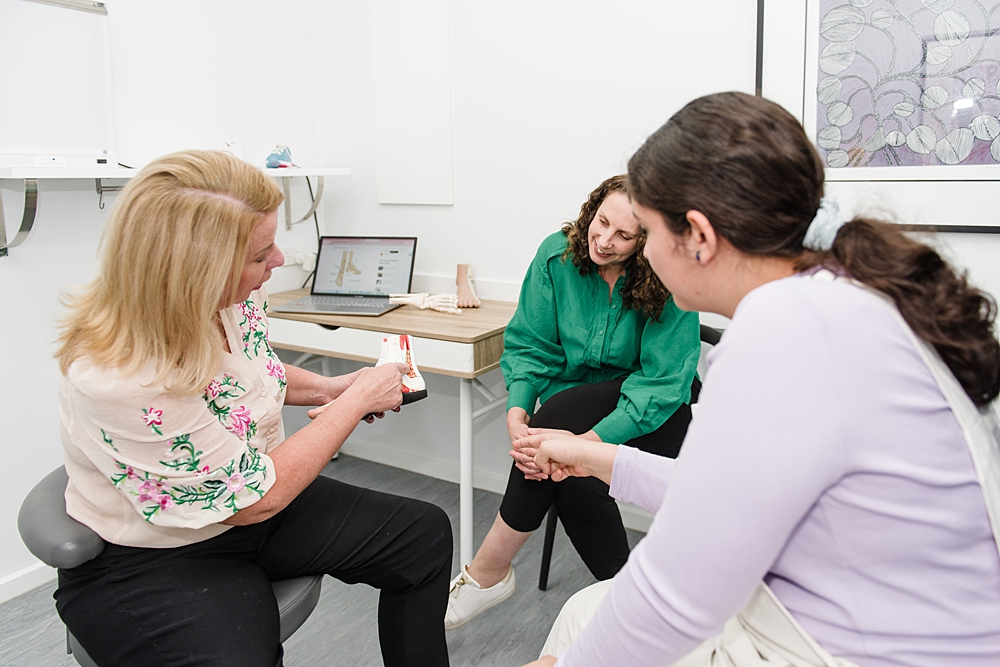Understanding Cold Feet: Raynaud’s Disease and the Podiatrist’s Role in Management
Experiencing cold feet is a common especially in colder weather. However, for individuals with Raynaud’s disease, the sensation of freezing feet is a chronic and often painful condition. Raynaud’s disease, also known as Raynaud’s phenomenon, is a vascular disorder that affects the blood flow to extremities, primarily the fingers and toes.
Individuals with Raynaud’s may experience attacks triggered by changes in temperature or emotional stress. During these attacks, the blood vessels in the extremities tend to constrict excessively, leading to symptoms such as numbness, tingling sensations, and color changes in the affected areas – they may turn white or blue due to reduced blood flow. Podiatrists play a crucial role in managing cold feet for individuals with this condition. They can provide guidance on preventative measures and recommend medications or laser therapy to improve microvascular circulation in the hands and feet. It is important for those experiencing symptoms of Raynaud’s disease to consult with their doctor or podiatrist for proper evaluation and management. Additionally, maintaining warm surroundings indoors and wearing thermal socks can help alleviate symptoms associated with this syndrome. In some instances where medication is necessary for symptom management or if there are repeated attacks causing severe discomfort or tissue damage (such as ulcers), under supervision from your healthcare provider aspirin might be prescribed as it has been shown to dilate blood vessels which could improve blood flow during an attack.
I. Understanding Raynaud’s Disease
A. Causes and Triggers
Raynaud’s disease is primarily caused by an exaggerated response of the blood vessels to cold temperatures and stress. When exposed to cold or emotional stress, the blood vessels in the extremities constrict, limiting blood flow and causing the affected areas, including the feet, to turn white, blue, and finally red as blood flow is restored. This cycle can be extremely painful and uncomfortable.
B. Primary vs. Secondary Raynaud’s
There are two forms of Raynaud’s disease: primary and secondary. Primary Raynaud’s, also known as Raynaud’s disease, occurs without any underlying medical condition. Secondary Raynaud’s is typically associated with an underlying health issue, such as connective tissue disorders or autoimmune diseases.
II. The Podiatrist’s Role in Managing Raynaud’s Disease
A. Diagnosis and Assessment
Podiatrists play a vital role in managing cold feet caused by Raynaud’s disease. The first step is accurate diagnosis. Podiatrists are trained to recognise the signs and symptoms of Raynaud’s and can differentiate it from other conditions that may cause cold feet.
B. Education and Lifestyle Guidance
Podiatrists educate patients with Raynaud’s on the importance of lifestyle modifications to minimise cold exposure and triggers. They may recommend wearing insulated socks, keeping feet warm with heated insoles, and using gloves and mittens in colder weather.
C. Footwear and Orthotics
Podiatrists can recommend appropriate footwear for patients with Raynaud’s disease. Insulated and waterproof shoes or boots can help keep feet warm and dry. Additionally, custom orthotics may be prescribed to improve foot circulation and prevent cold-induced discomfort.
D. Medications and Treatments
Sometimes, podiatrists may collaborate with other healthcare professionals to manage Raynaud’s disease. Medications like calcium channel blockers and vasodilators can be prescribed to relax blood vessels and improve blood flow to the extremities. Podiatrists can monitor the patient’s response to these treatments and adjust them as necessary.
Self-Care and Coping Strategies
Living with Raynaud’s disease can be challenging, but there are self-care strategies that individuals can implement to manage their cold feet effectively.
A. Keep Warm
Staying warm is crucial for individuals with Raynaud’s. This includes wearing layered clothing, using heated blankets, and ensuring the home environment is well heated.
B. Stress Management
Emotional stress can trigger Raynaud’s attacks. Stress-reduction techniques such as deep breathing, meditation, and yoga can help reduce the frequency and severity of episodes.
C. Avoid Triggers
Identifying and avoiding triggers is essential. This may include limiting exposure to cold temperatures, avoiding caffeine and tobacco, and managing stressors in daily life.
D. Stay Active
Regular physical activity can help improve circulation and reduce the frequency of Raynaud’s attacks. Podiatrists can recommend appropriate exercises to maintain foot health.
Raynaud’s disease can significantly impact the quality of life for those affected, especially when it comes to cold feet. The role of podiatrists in the management of Raynaud’s disease is invaluable, as they provide diagnosis, education, and treatment options to alleviate discomfort and minimise the impact of the condition. With proper care and lifestyle adjustments, individuals with Raynaud’s can better cope with their cold feet and enjoy a more comfortable and fulfilling life. It is essential for those experiencing symptoms of Raynaud’s to seek the expertise of a podiatrist to manage their condition and prevent complications effectively.

